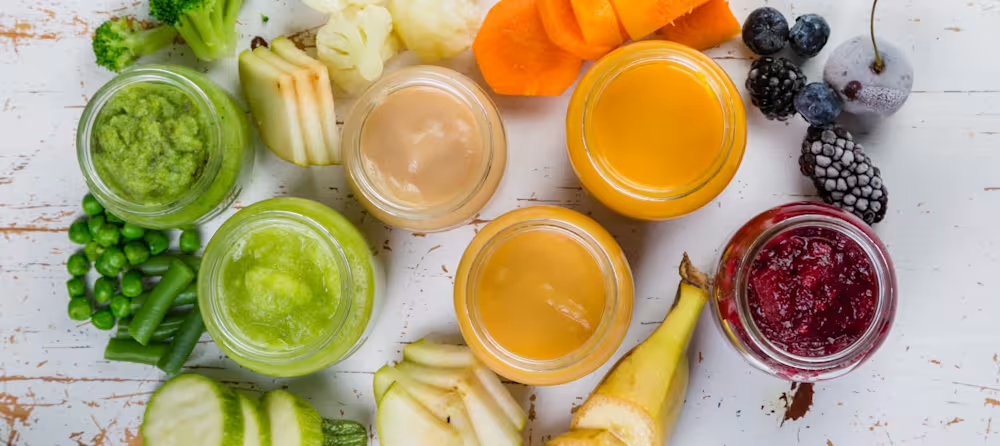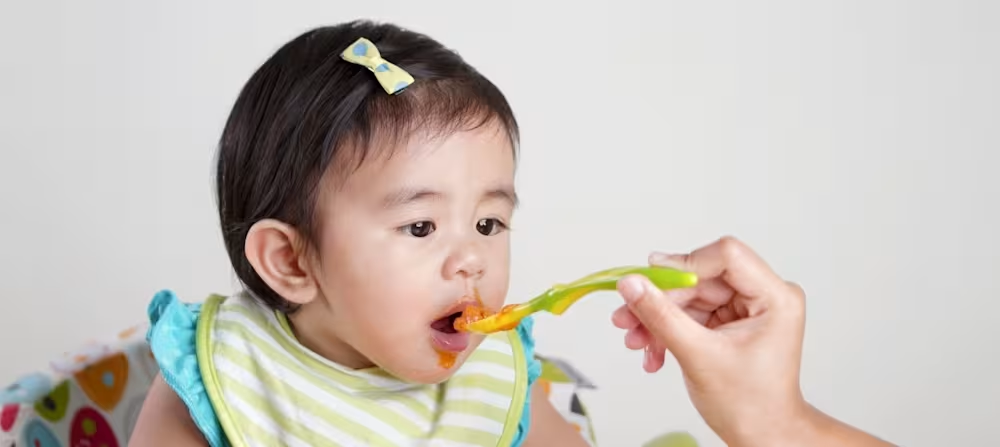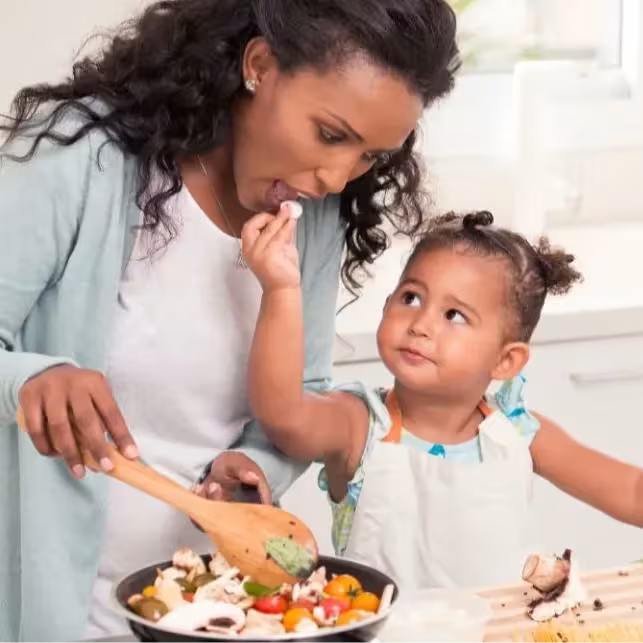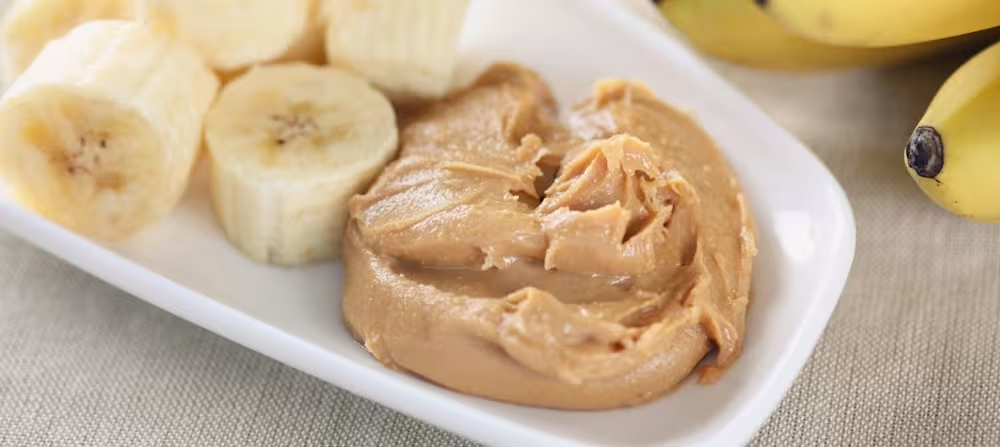Baby gagging vs. choking during BLW: How to tell the difference
Updated Oct 02, 2025

Learning to eat solid food is a BIG milestone for both your baby and you as a parent. For many of us, food is how we show we care, how we celebrate, and how we keep our culture alive. How exciting for our babies to be part of that!
But even though it’s an exciting time, it comes with its share of worries. (Hello, parenting in general!) What foods can my baby eat? Do I need to cut my baby’s food into tiny pieces? What foods are a choking hazard for my baby?
Learning the difference between gagging and choking—and how to handle them both—is one way to help ease your worries.
Baby gagging: Is it normal?
As your baby starts solids, it’s helpful to remember eating is a new skill they need to master, much like rolling over or crawling. They don’t immediately know how to chew, or how much to put in their mouths at a time—they need practice! As babies are exploring and learning about new food, it’s common for them to gag.
Why is my baby gagging on food?
The gag reflex is a protective mechanism that actually helps prevent choking. During a gag, the airway isn’t blocked, and baby is actively working to spit out or swallow a piece of food. Choking occurs when the airway is blocked, and baby is unable to get the food out themselves.
It’s important to note, according to the research currently available, baby-led weaning does not increase the risk of a choking episode [] when compared to a traditional or puree weaning style. No matter which you choose for your baby, all parents and caregivers should know and follow proper safety precautions when starting solids.
How to promote safety at mealtimes
Wait until your baby is ready before starting solids
Always feed your baby in an upright, supportive highchair
Offer soft foods that are easily mashed between your thumb and pointer finger
Avoid serving high-risk choking foods
Never leave your baby alone during mealtime
Offer all meals and snacks while sitting down. Avoid letting older babies , walk, run, or play while eating.
Offer only small amounts of food at a time
Limit distractions during mealtime. Turn off screens and remove toys from the eating area
Should I worry if my baby is gagging?
It can be nerve-wracking to watch your baby gag the first time (or any time really!), but it’s a completely normal and beneficial part of learning to eat. The gag reflex is an automatic response that prevents large objects from entering the airway. In babies, the gag reflex is much further up in the mouth than in adults. It starts about mid-tongue and moves further back as the baby gets older.
Gagging is common during the first few weeks of starting solids and should reduce over time as your baby becomes more proficient at chewing and moving food around their mouth. When a baby gags, their face may turn red and eyes begin to water. Sputtering, coughing, and retching noises are normal.
One of the best ways to reduce the gagging response is to allow them opportunities to practice eating. You can also introduce safe teething toys [] to help them explore the gag reflex. If your baby’s gagging isn’t improving, it’s best to call your pediatrician.
What should you do if your baby is gagging:
Stay calm and let your baby work through gagging on their own
Watch your baby closely. Look for them to spit the food out, or start to chew it again in a few seconds
Older babies can be encouraged to take a drink of water from a straw cup once they’ve worked out the gag. Using a sippy cup or open cup requires the child to tilt their head back which may cause food pieces to end up in the airway. A straw cup helps wash down any remaining small particles of food
What you shouldn’t do if your baby is gagging:
Don't overreact. Babies look to their parents or caregivers to see how they should react. If you make a big deal out of it or seem anxious, they might too
Don't stick your finger into your baby’s mouth. This could cause the food to go further back into their mouth and may push it back into the airway
Baby choking hazards
Choking occurs when an object or piece of food is too big, and actually blocks the baby’s airway.
While gagging is characterized by coughing and noise, choking is characterized by silence. Oftentimes, a baby will look scared, and may also start to turn blue or purple, especially on their lips. The baby may cough if the blockage of the airway is only partial.
What should I do if my baby is choking?
If you think your baby is choking, take immediate action. If possible, ask someone to call 911 while you begin first aid. The standard steps for infant first aid are below. Taking an infant first aid class may also help you feel more prepared as your baby starts solids.
If your baby is younger than age 1, use the following guidelines:
Place your baby face down on your forearm, with your arm resting on your thigh for support.
Deliver five quick, strong blows between the shoulder blades with the heel of your hand. This should hopefully dislodge the food.
If needed, turn your baby on their back with their head lower than their chest. Use two fingers to press down quickly on the center of the breastbone, just below the nipples, five times.
Repeat back blows and chest compressions until the food is dislodged. Never put your fingers into your baby’s mouth unless you see the object as you may push the blockage further back.
If your baby is age 1 or older, use the following guidelines:
Stand behind the child and wrap your arms around their waist.
Make a fist with one hand and place your fist just below the chest. Grab your fist with your other hand.
Press into their abdomen with a quick upward push. Repeat inward and upward thrusts until the piece of food comes out.
Guidelines referenced from .
High-risk choking foods
Being mindful of high-risk choking foods is one of the best ways to prevent a choking episode with your baby or toddler. The foods listed below remain choking hazards until about age 4.
Some of these foods should be avoided completely, such as whole nuts, while others may be cut up into safe pieces such as grapes.
| Firm, smooth, or slippery foods | Small, dry, or hard foods | Sticky or tough foods |
|---|---|---|
| Whole grapes, cherries, berries, grape/cherry tomatoes | Popcorn, hard pretzels, potato/corn chips | Spoonfuls of peanut, nut, or seed butters |
| Whole pieces of canned fruit | Small pieces of raw vegetables (carrots, celery) or partially cooked hard vegetables | Large, hard pieces of fruits and vegetables |
| Hot dog-shaped foods including cheese sticks & whole bananas | Apples or other hard raw fruit | Tough meat, or large pieces of meat |
| Peanuts, tree nuts, and seeds | Cooked or raw whole-kernel corn, raw green peas | Large pieces of cheese |
| Whole beans | Crackers or breads with seeds, nut pieces, or whole grain pieces | Fish with bones |
| Hard or round candy, jelly beans | Marshmallows, chewing gum, chewy fruit snacks, sticky candy |
Gagging vs. choking chart
Gagging and choking can both happen quickly and learning the differences help you to take quick and appropriate action if needed.
Remember, gagging is a protective mechanism that helps protect your baby from choking. It usually doesn’t require intervention. Choking, on the other hand, is an actual blockage of the airway and does require intervention.
| Gagging | Choking |
|---|---|
| Airway is clear | Airway is blocked, or partially blocked |
| Face may turn red, eyes may water | Face and lips may turn blue or purple |
| Sputtering, coughing, and retching noises | Quiet or silent |
| Don't intervene, as you could push food further into their throat | Work to dislodge the blockage |
How do I know if my baby is gagging, choking, or it's just reflux?
As your baby learns to eat, they may experience reflux, or spit up, during or after a meal. It may also happen as a result of gagging or choking. While it isn’t always possible to pinpoint the cause, you can watch for the following common clues. If any of these are possible, try to slow down your baby’s eating by offering small portions at a time.
Did your baby overstuff their mouth?
Did your baby pocket food in their mouth or cheek? (cute in squirrels, babies not so much)
Did they eat a lot of food quickly?
Most babies grow out of infant reflux around 18 months. As long as your baby continues to grow and seems happy, there’s no reason to worry about it.
According to the Mayo Clinic [], the following are reasons associated with reflux to contact your pediatrician:
Baby isn’t gaining weight
Regularly spits up forcefully
Often irritable after eating
Spits up a green or yellow fluid
Spits up blood or something that looks like coffee grounds
Refuses food
Blood in their stool
Difficulty breathing or chronic cough
Starts spitting up at 6 months or older
Baby food safety FAQ
Share article:
Note: The content on this site is for informational purposes only and should not replace medical advice from your doctor, pediatrician, or medical professional. If you have questions or concerns, you should contact a medical professional.










